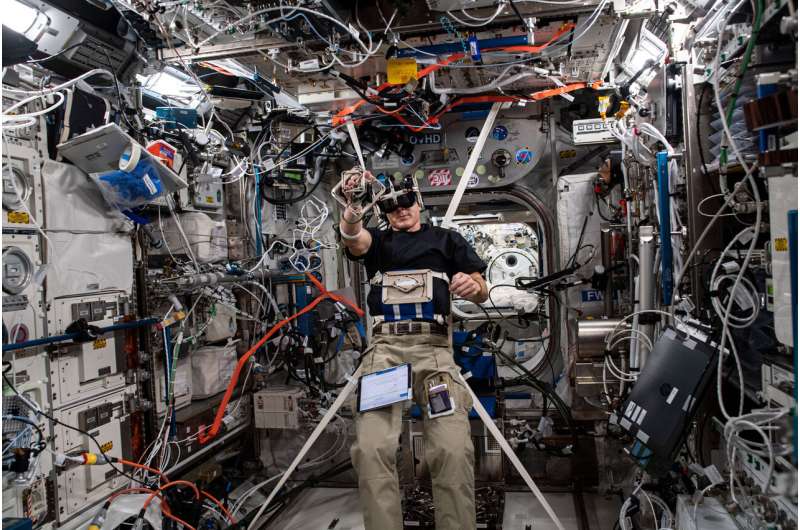Credit: ESA/NASA
NASA astronaut Mike Hopkins performs the Grasp experiment in the Columbus module of the International Space Station ahead of the New Year. The experiment studies how the central nervous system, specifically hand-eye coordination, adapts to microgravity.
Grasp stands for Gravitational References for Sensimotor Performance and seeks to better understand how the central nervous system integrates information from different senses, such as sight, sound and touch, to coordinate hand movements and determine what role gravity plays.
How does the experiment work? Mike dons virtual reality (VR) gear that is coupled with a laptop and driven by an audio/graphics system. The VR headset simulates a series of tasks for the him, while a 3-D motion tracker updates the display in real time in response to his hand, body and arm movements. Measurements are taken on ground and during spaceflight.
ESA astronaut Thomas Pesquet was the first to use the VR gear to perform the experiment during his 2016 mission. ESA astronauts Alexander Gerst and Luca Parmitano followed suit during their respective missions. Watch a video of Alexander performing the experiment.
Researchers suspect that, on Earth, the brain uses gravity as a reference. When reaching for an object, the brain uses visual clues as well as how your shoulder muscles counteract the downward force of gravity to keep your arm straight to calculate the distance between your hand and the object.
However, the sensation of floating for months on end is something our brains did not have to deal with until last century. Seeing how they adapt to this environment offers valuable insight.
Spearheaded by researchers at French national space agency CNES, the study helps us identify the workings of the vestibular system that keeps our balance, and how it connects to the other sensory organs. In other words, Grasp investigates the physiology behind hand-eye coordination, shedding light on how to treat patients showing a loss of vestibular function on Earth.
For astronauts, the research will be useful during spacewalks, where coordination in weightlessness with few visual clues is vital.
Provided by European Space Agency
























